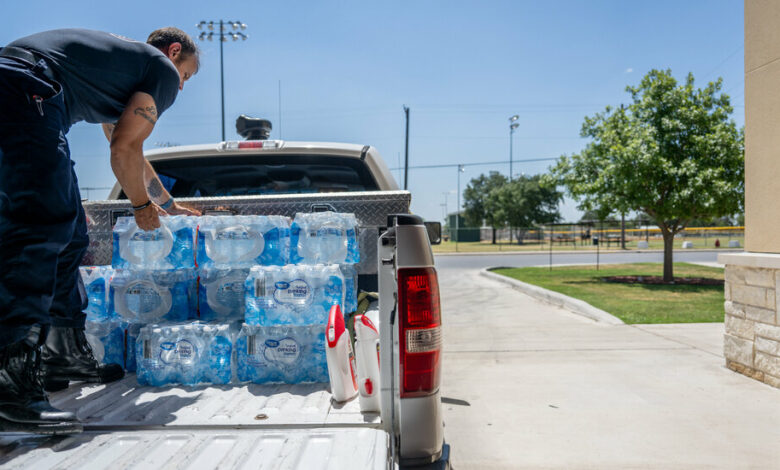A heat wave is coming: this is how emergency workers are preparing

Large parts of America are being hit by a heat wave, forcing emergency workers to prepare for record numbers of people in heat distress.
An extreme heat warning was in effect for southern New England, where meteorologists warned of dangerous heat and humidity from Tuesday through Friday. It is the first serious heat wave of the year for that part of the country.
As temperatures rise, it’s easy to overheat and when that happens, it’s important to cool down quickly. Elevated body temperatures can cause brain damage, organ failure, and in severe cases, death.
“With heat exhaustion, the goal is to cool down as quickly as possible,” said Dr. Aisha Terry, associate professor of emergency medicine and health policy at George Washington University Hospital in Washington and chair of the American College of Emergency Physicians. “There are certainly some health issues where we have to be careful about how quickly we correct the abnormality. This is not one of them.”
In total, millions of people in the United States are under extreme heat warnings. And if you think the country is getting warmer, that’s not your imagination. Between May 2023 and May 2024, the average American experienced 39 days of abnormally high temperatures due to climate change, scientists reported last month. That’s 19 days more than in a hypothetical world without human-induced warming.
This is how care providers adapt to the risks.
Do paramedics prepare differently?
Aid workers and local authorities across the country are distributing information about cooling centres and swimming pools, and are stocking up on bottled water to distribute as relief from the high temperatures and muggy weather.
New cooling methods can be relatively simple: some emergency vehicles are now equipped with canopies that provide makeshift shade for heat victims who need some relief from the sun.
“If they’re outside, get them into the shade,” said Jeffrey Gruenglas, an emergency physician in West Barnstable, Mass. “You could turn on the air conditioning in the ambulance and take them out there.”
In some areas, paramedics carry ice packs that they can place on the patient’s forearm and groin area as a way to cool them down quickly. Another effective tactic: place wet towels over as much skin as possible. In some cities, first responders carry blankets to place on the ground. They move the victims there while they are being treated, rather than leaving them on scorching concrete or asphalt, which can cause serious burns.
“I’ve had times where I could literally feel the heat coming through my shoes,” said Chris Hoyer, a retired Phoenix police officer who now trains other officers.
Police officers, whose vehicles are not readily equipped with the same kind of life-saving equipment as ambulances, can stock their cars with bottled water or allow heat victims to sit in their air-conditioned vehicles, he said. Mr. Hoyer said he recalled officers surrounding heat victims to shield them from the sun until paramedics arrived.
Have innovative treatments emerged?
Some doctors and researchers claim there is a better and faster way to lower body temperature: immersing heat stress victims in ice water.
In Arizona, Texas and other areas, first responders carry large plastic bags, or even body bags, that serve as ice packs. The bags are filled with ice cubes and water and zipped up around patients up to their chest area for about 15 to 20 minutes or so, until they are cooled to a safe level.
The technique has been used for years to cool down overheated soldiers or athletes suffering from heatstroke. In Phoenix, where record temperatures killed 645 people last year, fire trucks and ambulances all carry specially designed “dip bags” to help overheated victims.
But even kiddie pools filled with ice and water can serve this purpose. The key is to work as quickly as possible to cool the victims, doctors said.
There is widespread fear that immersion could cause a stroke or heart attack by cooling the body too quickly. But cold water immersion can quickly lower body temperature with little risk of other problems, researchers said, especially if body temperature is closely monitored with a rectal thermometer.
What else should care providers think about?
Themselves. The people who treat heat victims can also become heat victims. Firefighters are burdened with heavy, hot equipment. Paramedics can overheat as they carry victims to ambulances.
Hydration is essential, and not just for people, but also for the specially trained dogs that sometimes work with police officers. The fastest and best method of cooling an overheated dog, according to some researchers, is also immersion. “There have been several times where dogs have been at crime scenes, and I’ve put the dog in a pool in the backyard,” Mr. Hoyer said.




